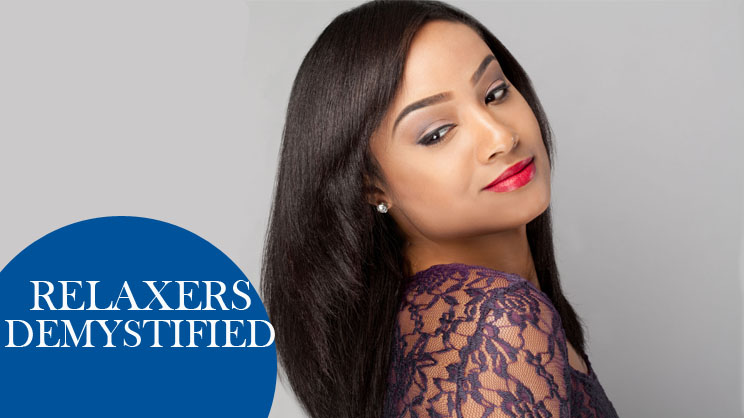This blog post follows a Q&A format and lets you in on everything you ever needed to know about hair relaxers.
How Do Relaxers Work?
Relaxers work by breaking the disulphide bonds on the cortical layer to alter the curl pattern of the hair. The process stretches and loosens the hair altering the curl pattern permanently.
What are the different types of relaxers?
There are two types of hydroxide relaxers. Lye relaxers contain Sodium Hydroxide as the main active ingredient. These relaxers do not need to be mixed. Sodium Hydroxide relaxers are very effective in straightening the hair quickly. Because it processes quickly it is also the most commonly used relaxer by professionals. Professional stylists are able to apply this relaxer through a precise and speedy process and time it correctly to avoid over processing. A neutralizing shampoo is used after the process to avoid damage and potential irritation during the chemical process.
No Lye relaxers are relaxers that do not contain sodium hydroxide. They contain lithium hydroxide, potassium hydroxide, calcium hydroxide or guanidine hydroxide. This type is ideal for a sensitive scalp, as the chemicals and pH level of these types of relaxers are milder than lye based relaxers. Some may require to be mixed before use and they are considered gentler on the scalp. However, No lye relaxers are commonly associated with drier hair due to calcium build up which will often leave the hair dry and dull.
Can I use Sodium Hydroxide if my client has a sensitive scalp?
Before application of a relaxer, it is advisable to base the scalp with a petroleum jelly. This action coats the scalp and prevents premature irritation.
Why are there different relaxer strengths?
Relaxers are mainly available in either Super or Regular strengths and occasionally Mild. The level of hydroxide used in relaxers determines the strength. For example, super strength contains a higher concentration of sodium hydroxide than a regular strength relaxer.
The choice of relaxer strength will be determined by the client’s hair texture. Coarser hair textures will often require super strengths and medium or fine textures will go well with regular and mild textures respectively. However, in the absence of a mild relaxer, a stylist may use a regular strength.
What about pH?
The pH is a measure used to determine the acidity and alkalinity of a substance. The scale is represented by numbers ranging from 0 to 14 where 7 is neutral. Greater than 7 on the pH scale is more alkaline and less than 7 is more acidic. The pH of hair ranges between 4.5 – 5.5. Lye relaxers range from 12 – 14 and no-lye relaxers range from 9 – 11.
Can any type of shampoo be used after a relaxer?
After a relaxer service, you should always use a Neutralizing shampoo to stop the chemical reaction. A neutralizing shampoo restores the hair to its normal pH of 4.5.
What is the processing time for a relaxer?
Because of the varying hair textures, processing times may vary from client to client. The maximum time should be 20 – 25 minutes.
What is wrong with getting hair bone straight?
Over processing weakens the hair. This continuous trauma to the hair damages the hair to irreparable state. The recommended level of straightening is 75%.


Share This
Share this post with your friends!